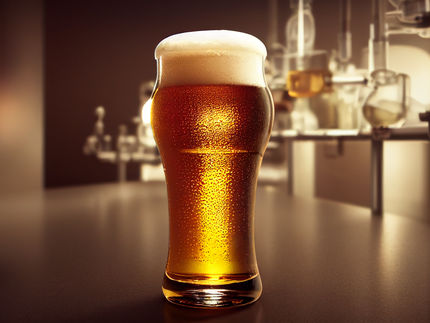New diversity for lager beers
Unlike ales, lager beers differ little in flavor. But now, by creating new crosses among the relevant yeasts, Kevin Verstrepen, PhD, Stijn Mertens, and their collaborators have opened up new horizons of taste.
The relative uniformity of flavor among lagers turned out to result in significant part from a lack of genetic diversity among the yeasts. Genetic studies showed that lager yeasts had resulted from just two crosses between the parent yeasts, Saccharomyces cerevisiae, and S. eubayanus. The problem was that the two yeast species are so different as to make successful crosses rare.
"We figured that if we could create more crosses between S. cerevisiae and S. eubayanus, we would perhaps produce a set of more diverse lager yeasts, which could yield more diverse lager beers," said Verstrepen, who is Professor in Genetics and Genomics, University of Leuven and director of the VIB lab for Systems Biology, Leuven, Belgium. The researchers did their best to optimize growing conditions, hoping to encourage mating between the yeasts. To this end, they experimented with different temperatures and growing media.
"We were able to get some serious sexual action between our yeasts, which resulted in hundreds of new lager yeast strains," said Verstrepen. But of 31 new strains that they tested in small scale beer fermentations, only ten performed reasonably well in terms of speed of fermentation, and flavor. "Some were really bad," Verstrepen confesses.
They then tested the four best of these in full scale fermentations. "Two were magnificent," said Verstrepen. "They fermented more quickly than the commercially used reference lager yeast that we compared them to, and they produced really nice flavors."
More generally, "We found that the different lager yeasts that we created showed very different aroma profiles compared to today's commercially available lager yeasts," said Mertens, who was the paper's lead author. "This means that it now becomes possible to make lager beers that, like ale beers, are more different from each other, and this without the need to extensively change the production process."
Lager beers are fermented with S. pastorianus, which is a hybrid between S. cerevisiae and S. eubayanus, at temperatures generally between 8-15oC. They also have a lower alcohol content, 4-5.5 percent by volume. Ales are fermented by S. cerevisiae, at higher temperatures--usually between 15-25oC., and they tend to be stronger than lagers.
The research originated during one of the regular Friday evening beer tastings at the laboratory, in which students would taste and discuss five or six related beers. "One night, we tasted six Pilsner-type beers, and someone commented on how similar they were, much more so than beers of other types," said Verstrepen.
Original publication
Other news from the department science

Get the life science industry in your inbox
By submitting this form you agree that LUMITOS AG will send you the newsletter(s) selected above by email. Your data will not be passed on to third parties. Your data will be stored and processed in accordance with our data protection regulations. LUMITOS may contact you by email for the purpose of advertising or market and opinion surveys. You can revoke your consent at any time without giving reasons to LUMITOS AG, Ernst-Augustin-Str. 2, 12489 Berlin, Germany or by e-mail at revoke@lumitos.com with effect for the future. In addition, each email contains a link to unsubscribe from the corresponding newsletter.





















































